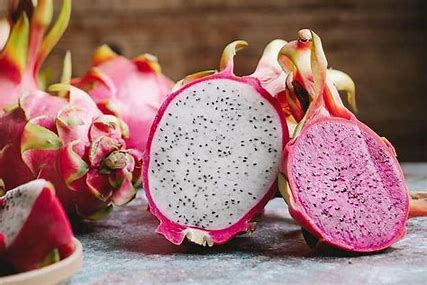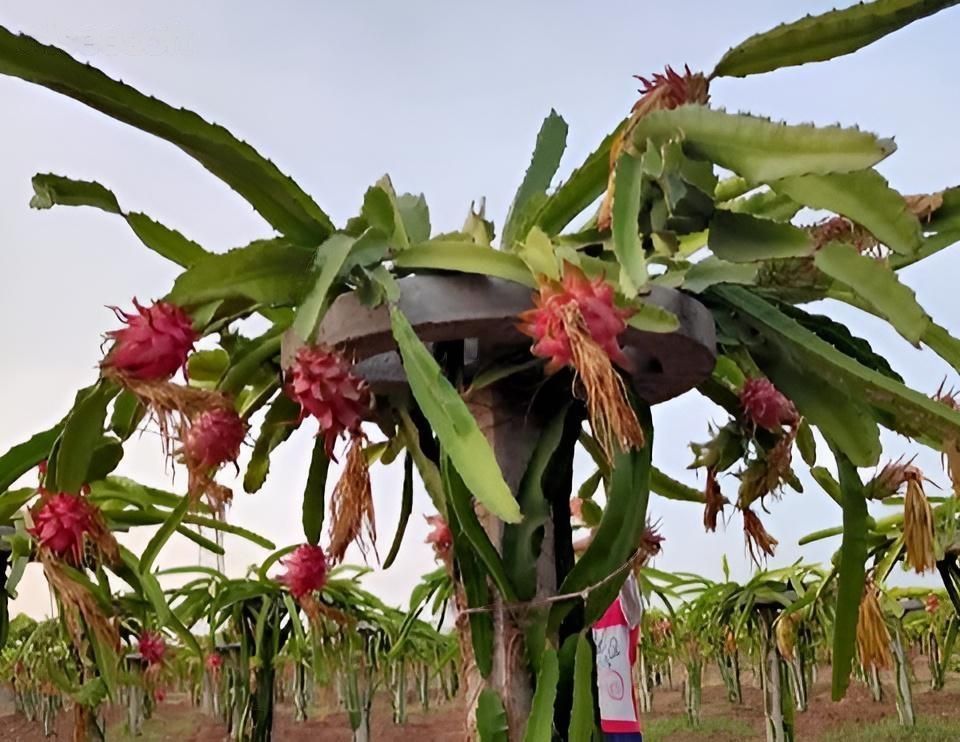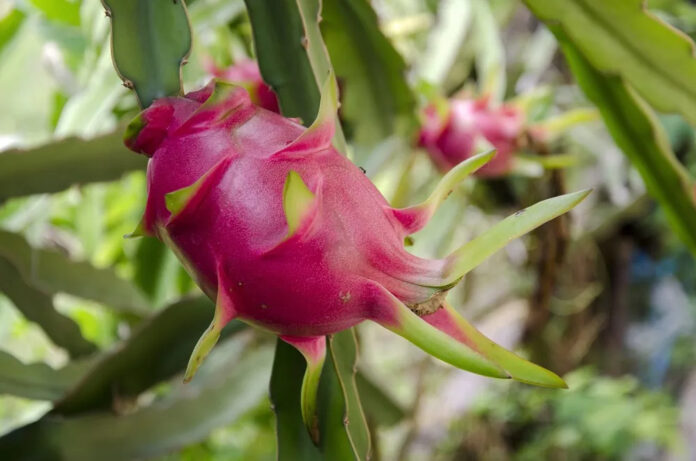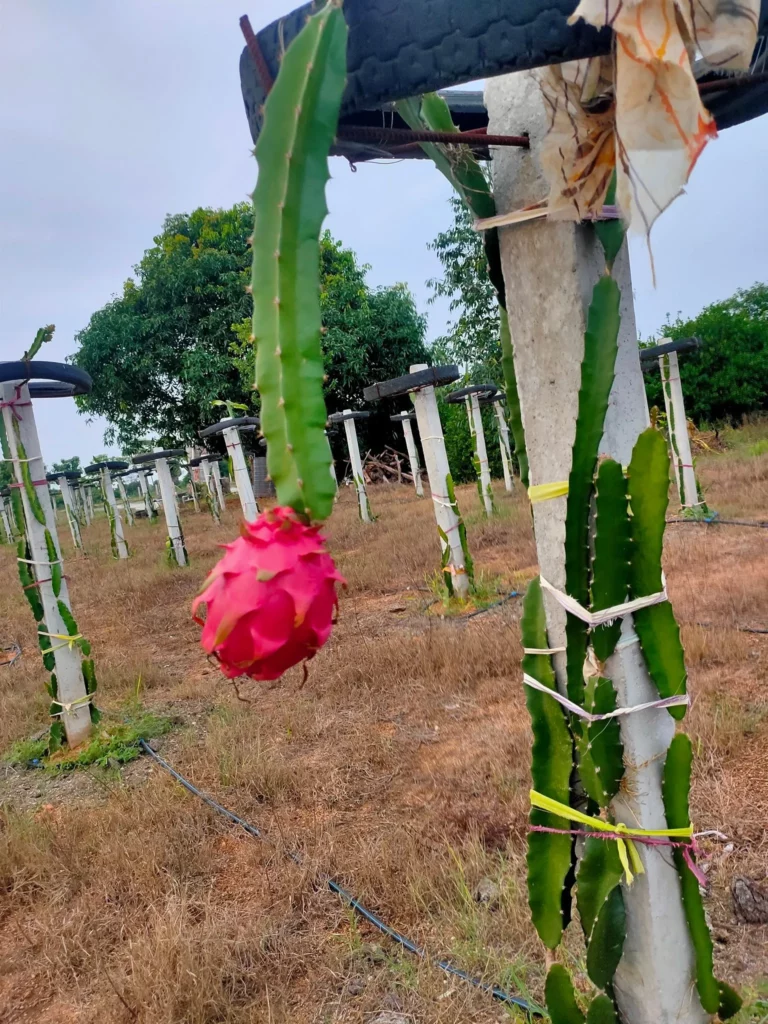Dragon Fruit has been the new agricultural ‘cash cow’ among the few Kenyan farmers who have opted to grow it. The dragon fruit is the most expensive fruit sold in Kenya.
A kilogram of dragon fruits retails at between Sh. 800 and Sh. 1500. At Zucchini groceries, a dragon fruit retails at Sh. 890.
Cultivation of the plant has proved popular in Kenya due to the high returns and low maintenance costs involved. The plant thrives well in tropical climates and requires minimal attention and care for optimal production.
Also known as pitaya, a single dragon fruit weighs between 600 grams and 1.2 kilograms. Farmers who have already invested in the plant are already minting some good fortune returns, with there being a wide market for the fruit’s consumption, not only in Kenya but also overseas.
Local demand for dragon fruits has rapidly increased over the last two years, especially with the increase in people who are conscious about their health and nutrition.
This has seen large supermarket chains and groceries begin to stock this fruit. It is even in higher demand among Asian communities in the country.
Farmers oversee that the fruit’s novelty price might fall to Sh. 500 per kilogram as many more farmers begin to grow it and the forces of demand and supply begin to stabilize.
However, agricultural experts say that even if the fruit retailed at Sh. 400 per kilogram, this would still be enough to make an avid dragon fruit farmer Sh. 10 million annually from just one acre filled with the plant.
A piece of advice to interested farmers; the early bird catches the worm.
Furthermore, the dragon fruit will be a long-term investment for the farmer as once the plant matures, it can produce fruits for 20 to 30 years without fail.
Peak seasons for the dragon fruit run from November to May with January, February, March and April being the fruits optimal months.
Origin of the Dragon Fruit
The dragon fruit hails from South and Central America where it is known as Pitaya. It is a plant in the cactus species, its Latin name being Hylocereus cactus.
There are four varieties of dragon fruit plant. Three are pink-skinned with different flesh colors on the inside that can be white, purple, or red. The other variety is a smaller and rarer yellow-skinned hybrid with white flesh.

The world’s largest dragon fruit producers are the Philippines and Vietnam which grow about 36,000 hectares. 90 percent of this produce is exported to China and other markets are in Hong Kong, Australia and North America.
The same goes for the Kenyan market, with 50/50 of the produce going between local consumption and export. With the dragon fruit, you can never go wrong.
The few countable farmers growing the fruit in Kenya have formed an online community, where they can best exchange their knowledge, discussing ideal plant practices and also organizing farm tours to engage more and exchange fruit varieties.
Kenyan farmers growing the dragon fruit say it is an easy crop to manage and maintain as it is hardy and negligible to cases of pests and disease attacks.
How to grow the dragon fruit in Kenya
Seeds or grafted seedlings
You can successfully grow the dragon fruit from grafted seedlings/cuttings and seeds.
However, the former is the most sensible and preferred method because it would take approximately 12 to 18 months for the seedling/cutting to mature, depending on the ecological zone, whereas the seeds would take almost 3 years to mature.
Also growing the seeds and starting from scratch can be labor intensive and does not guarantee superior produce.
The cuttings should be at least 20 cm and cut from the mother plant, left in the shade for 5-7 days before being planted again in the field. The plant grows to a height of 30 meters. The cost of one seedling should be around Sh. 1000 to Sh. 1500 depending on the size, and variety of the seedling.
Farming Land
An acre of land with the plant can accommodate around 2000 plants. If you are leasing or owning a large parcel of farming land, you might want to consider taking up dragon fruit farming.
Dragon Fruits grow vertically and are usually feeble, thus they require support to grow. Therefore, you should get support for your plant because it has tremendous weight.
The poles should measure 4×4 inches if they are concrete posts and 5×5 inches if they are wooden poles. Ensure that the crop achieves and maintains a height of five feet.
The poles should be spaced 3 meters apart or more, to allow for mobility during maintenance. Each post can support two plants, planted two meters apart from each other.
Dragon fruit farming is with no doubt the most profitable fruit farming venture in Kenya. One post of 2 plants can give you about 20 fruits each season. On average, each fruit weighs about 500g.
That means each pole will give you approximately 10 kgs every year. If you sell at a wholesale price of 500 per kg, you will be earning Ksh5,000 per concrete/wooden post.
One acre accommodates 2,000 stools at a spacing of 1m between the stools and 2m between the lines. That translates to Ksh10 million annually from one acre.

The dragon fruit can be planted on almost any soil type. Well-perforated sandy or volcanic soils are best preferred. The Ph of the soil should range between 5.5 to 6.5 for maximum and quality yields.
The plant grows in areas with temperatures ranging between 20-30 degrees Celcius and an annual rainfall of about 40-60 mm.
The hardy nature of the dragon fruit plant has seen farmers from arid and semi-arid areas venture into this ‘gold-mine business’ as the plant requires very little water to survive, yet yields are guaranteed.
Drip irrigation is recommended for better efficiency. With the plant coming from the cacti family and being drought resistant, regular watering at least twice a week is recommended however this is dependent on the weather conditions experienced in the farmland.
Soils should also be preferably rich in Nitrogen, Phosphorus and Potassium to encourage flowering and fruiting.
READ: Kimani: How my farm produces 1,400 litres of milk daily
Flowering
Flowers initially form as buds and then undergo flowering and pollination. After four weeks, the flower blooms in the evening and withers immediately.
During this period, the crop requires eight hours of sunlight daily. It is worth noting that the flowers open between 7 pm and 8 pm, and by 8 am, the flower closes. This provides a very short window for the bees to pollinate the flower.
Therefore, to reduce missed pollination, hand pollination can be done. Feather pollination can be used as an alternative to bee pollination, and it works quite well.
Use the feather to transfer pollen from the stamens (Green is the male flower part) to the stigmas (Yellow is the female flower part) inside the flowers. Thereafter, the pollinated flowers form fruits.
The fruit emerges from the flower and matures after 35 days. It is surrounded by razor-sharp thorns that protect it from preying animals.
When the dragon fruit begins to flower, ensure you prune it regularly to remove overlapping growth so that there’s maximum light penetration.
If pruning established plantings where buds and immature fruits are present, favor these and remove surplus unproductive stems, particularly those low on the plant.
Pests and diseases
The dragon fruit is rarely attacked by pests. It is however prone to fungal infections which attack the leaves, trunk and roots.
They result when excess rainwater logs around the roots.
Harvesting dragon fruit
The dragon fruit should be picked immediately after it is fully grown as even a delay of 4-5 days can cause it to rot.
Harvest the fruit as soon as the green color turns red by gently twisting the stalk until it snaps. There is a technique used to pick it; twisting it in a clockwise direction and plucking it.
A healthy dragon fruit weighs approximately 500 grams and is characterized by sweetness. A mature plant can produce 30 to 100 dragon fruits in its third year of flowering and producing fruits.
Your yield and money, in turn, will be dependent on the number of dragon fruit plants that you have on your farm.
The level of sweetness can be tested using a portable gadget called a Brix refractometer; which measures the sucrose content in a dragon fruit sample. The higher the reading the sweeter the fruit.
After harvesting, note that the dragon fruit peel may change color but the taste does not change, hence you must ensure you harvest the fruit ONLY WHEN it is ripe.
The fruit is not highly perishable because it stops ripening once harvested. With this, the fruit can last for at least 18 days without refrigeration and up to 2 months in the fridge. This enables the farmers to sell their produce to far areas including overseas.
Almost every part of the pitaya plant can be consumed; the roots, flowers and peels can be used to make herbal tea, its stems can be used to make soap while value addition can be used on the fruits to make wine, juices, yogurt and smoothies.
How to consume dragon fruit
Cut the fruit down the middle and scoop out the flesh, which is dotted with tiny edible black seeds, using a spoon. You can also blend it with other fruits to make exciting cocktails.
Benefits of dragon fruit
- Serves as an antioxidant for cancer, hypertension, diabetes, and constipation;
- Its calcium helps in bone rigidity and formation;
- You can make vinegar, wine, jam, yogurt, ice cream, herbal tea, and bathing soap;
- Adds aesthetic value to the environment and enhances biodiversity;
- It is high in vitamins, minerals, and fiber which boosts immunity and improves digestion.










